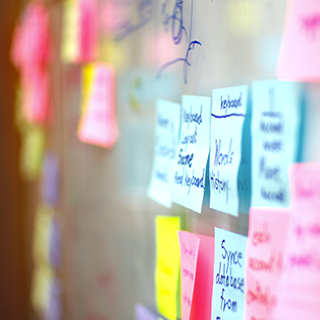
How To Hypnotize Yourself (Step By Step Guide)
Originally posted on https://www.ehypnosis.com/blog/how-to-hypnotize-yourself
What if you had the power to change your thoughts, your feelings, and your habitual responses?
What would you choose to do?
Perhaps you might make yourself more confident, change your approach to food, beat your biggest fears, or simply be kinder to yourself? Or maybe you’d pursue a brand new career, make it possible to get a good night’s sleep, or stop smoking for good?
Regardless of your goal, learning how to hypnotize yourself offers a powerful and efficient way of moving past negative thinking patterns. And, best of all, it’s something that you can do by yourself, any time you choose – and in any place – you don’t need to pay for appointments or rely on the skills of an expert.
Self-hypnosis is increasingly popular, and it’s much easier than you might assume. You don’t need an expert to guide you, you don’t need to take any medication, and you can be hypnotized on your first try.
So, how exactly do you go about hypnotizing yourself, and how can you make sure that it works?
This step-by-step article will explain what to do at every stage of the process, walking you through what you can expect and provide tips to help ensure you get the best results as you learn how to hypnotize yourself.
The 3 Stages of Self Hypnosis
When you’re hypnotized, you enter a deeply relaxed, maximally receptive states in which positive suggestions can get past the barriers and defenses that your mind usually puts in place. Contrary to popular belief, you’re not asleep during self-hypnosis, so you can choose to exit the hypnotic trance any time you wish – this means that self-hypnosis is safe to do alone, and that you’ll still be able to respond to urgent cues that may need your attention.
This helps you to change the way you think and act.
Now that you have a basic sense of what hypnosis involves, we can turn to explore the three stages of self-hypnosis.
When you first think about hypnotizing yourself, you might imagine that it takes a long time to learn the relevant techniques or that you’ll need to be taught by an expert.
However, it is a surprisingly simple process, and it becomes progressively easier the more often you do it. In addition, as you’ll see, each of the stages of hypnosis utilizes skills that you may have already begun to develop elsewhere.
Stage 1: Hypnotic Induction
 In the induction phase, you begin to relax and clear your mind.
In the induction phase, you begin to relax and clear your mind.
This is very similar to trying to settle into sleep at night, in that it requires you to slow your thoughts, let go of physical tension and set side practical concerns for another time.
Some people find the induction stage of self-hypnosis easy, while others may struggle (especially if they’re highly stressed). We’ll offer tips and techniques to make induction easier below. Once you’ve been through this phase a few times, your body will start to relax more quickly.
Stage 2: Creative Visualization
 Next, you enter the creative visualization phase of self-hypnosis, where you begin to uproot unhelpful, old beliefs and replace them with newer, more productive ways of thinking.
Next, you enter the creative visualization phase of self-hypnosis, where you begin to uproot unhelpful, old beliefs and replace them with newer, more productive ways of thinking.
This stage requires the use of imagination, a high level of focus, and a consistent commitment to making the change that you’re working towards.
In other words, your intentions need to be aligned with what you’re picturing if you’re going to succeed in creating positive change.
This is why hypnosis requires a pre-planning and careful examination of your goals. It’s also wise to set one goal at a time, working through them in order.
Stage 3: Exiting Hypnotic State
 When you’ve finished the middle part of self-hypnosis, it’s time to exit the hypnotic state. This is easy to do, and you will return to full consciousness and normal awareness.
When you’ve finished the middle part of self-hypnosis, it’s time to exit the hypnotic state. This is easy to do, and you will return to full consciousness and normal awareness.
You may feel a little sleepy at first, but you can go about your day as normal.
However, it can be jarring to exit self-hypnosis in an abrupt way, so many people find it helpful to have a cue that indicates the session is over.
This may be a specific word, a counting process (e.g. backwards from 10), or a gentle musical alarm. We’ll look at example cues in more detail later on in this article.
How To Hypnotize Yourself
Having laid the groundwork required to understand the process of how to hypnotize yourself, it’s time to learn how to do a self-hypnosis session for yourself.
You are probably now asking yourself, ‘does hypnosis actually work?’ or ‘can I really hypnotize myself?’
To make it super easy for you to achieve a state of hypnosis, we’ve broken this down into a step by step process, which will gradually shift you from induction to visualization and finally to a gentle, smooth exit from the hypnotic trance.
Before you begin, it’s important to give some thought to the right place to conduct your self-hypnosis session. If your environment is noisy, disruptive and prone to interruptions, then this would not be an ideal setting for you. In particular, look for a quiet, comfortable and private place where you are unlikely to be disturbed.
Many people like to lie down in bed during their sessions, but you can also sit upright propped against pillows. The key thing you need to do is ensure that you won’t be in any physical discomfort, and that you feel safe and calm before the session.
It’s also worth considering the best time of day for your self-hypnosis. For example, doing your session before bed allows you to naturally fall asleep after the process ends, but you may also be too sleepy to concentrate on the visualization stage of hypnosis at the end of the day.
Alternatively, starting the day with self-hypnosis can help to set you up for a positive, productive day, but this will require you to build in 5-10 minutes at the end of the session to allow you to gradually return to your everyday mental state.
It may be worth experimenting with both approaches to see what works best for you.

Priming Yourself For Self Hypnosis
Priming yourself for hypnosis simply involves getting yourself into the right physical and mental state to the most out of your session.
So, ask yourself: What is it that helps me to relax and unwind?
There are not set rules you need to follow here. However, playing calming music, doing some yoga, going for a peaceful walk in nature or taking a bath with essential oils are all good examples of ways in which you can slow and focus your mind before hypnosis.
Before You Begin
While finding the right environment and priming yourself are two important steps to take before self-hypnosis, there are some other things also worth doing before you begin your session.
In particular, it’s important to set an intention or a motivation that you can then turn into a verbal affirmation.
In other words, you’ll benefit from knowing exactly why you’re doing self-hypnosis.
What do you want to get out of this process, and how do you want your life to change?
Experiment with different words and phrases until you find the most natural way of phrasing your particular goal or desire.
Incorporating Affirmations Into Your Hypnosis
You may wish to recite affirmations before you begin each session, as well as at the end. It’s important that your language is positive, inspirational language and that you use power words.
For example, if you’re trying to overcome anxiety about a presentation, opt for “I am a confident and skilled public speaker” rather than “I don’t want to be afraid to speak.”
Similarly, if you’re trying to quit smoking, choose something like “I feel healthy and happy without cigarettes.”
It would be beneficial for you to learn more about positive affirmations and tapping into those words that resonate with you personally.
Aside from using positive and inspirational language, there are no rules to what is right and wrong. As long as your words have a positive focus and they make you feel good, you are on the right track.
In the event you are unable to set yourself up for a self-hypnosis session, you can still practice affirmations as a tool to reinforce your empowerment.
Affirmations can boost your self-esteem and can also prime you to get the best out of a daunting situation (such as a job interview).
Tuning In
 Doing a simple breathing exercise will help you to get into the right mental state for self-hypnosis.
Doing a simple breathing exercise will help you to get into the right mental state for self-hypnosis.
Spend 3-5 minutes breathing deeply, inhaling through your nose and out through your mouth. When you do this, you help to tune out extraneous details by telling your mind and body that it’s time for a reflective, focused exercise. You may also benefit from breathing out for longer than you breathe in, which helps to slow your heart rate.
As with meditation, you will notice other thoughts slipping in and out of your awareness, but try to let them pass without paying them much attention.
These fleeting thoughts are natural, so don’t punish yourself for them – they don’t mean that you can’t be hypnotized, or that you’re doing anything wrong.
TIP: Imagine that you’re standing at a train station and a very long train is passing by. There are so many thoughts, ideas, and distractions on each and every single one of the carriages. Your task is to remain standing on the platform, and letting these thoughts continue to pass by.
If you find yourself latch on to one of the carriages, you need to gentle get yourself back on the platform.
The more you practice self-hypnosis, the easier it will be to keep all of your attention on the exercise. As a bonus, strengthening your focus and concentration can benefit you in the rest of your life as well.
Project Your Intentions
 Turn the full power of your focus to the thing that you want to change – the habit, the feeling or the trait that is holding you back. Think back to the intention that you started before you began to self-hypnotize, and restate it to yourself in the words that you chose.
Turn the full power of your focus to the thing that you want to change – the habit, the feeling or the trait that is holding you back. Think back to the intention that you started before you began to self-hypnotize, and restate it to yourself in the words that you chose.
Follow it with the words “And I believe I can change my habits/feelings/behavior” (delete as appropriate). You may repeat these words out loud or in your head – whichever feels more intuitive to you.
As you do so, let your body and mind fill with the glow of positivity. Allow yourself to feel completely confident, as though you have already achieved your goal. Spend at least five minutes on this step of self-hypnosis, fully cementing your intentions.
This is a wonderful phase of self-hypnosis that strengthens your commitment to your goal and fills you with good feelings.
Once you feel that you are entirely immersed in your intention and it is crystal clear to you, project it outwards into the space around you.
Imagine it as a signal that you are sending out into the universe, or as a commitment, you’re making for all to see.
Breathe Deeply
 This is the stage of the self-hypnosis process when you move beyond more focus and relaxation and start to induce a trance.
This is the stage of the self-hypnosis process when you move beyond more focus and relaxation and start to induce a trance.
First, return to the breathing pattern you adopted at the outset, slowly and deeply breathing in through your nose and out through your mouth. This time, feel yourself relaxing more and more with each breath, sinking further into a hypnotic state.
Focus on the rhythm of your chest expanding and contracting, and on the increasing heaviness of your arms and legs. Know that you are moving ever deeper into the trance, and feel your mind becoming clearer as you do so.
After several minutes, move your eyes upwards so that they are looking towards the tops of your eyelids and towards the place where your third eye is said to be located (between the brows).
Try to relax your eyes and eyes as you do, and notice the way that your eyelids begin to flutter.
There is no set time that you need to impose for this step of self-hypnosis, and focusing on the time will only distract you from the process.
Instead, simply move on to the actualization step when it feels natural – take your time and allow yourself to sink in. Once again, this will likely become quicker and easier with practice.
Actualization
 At this point, you’re in a highly relaxed state and are receptive to hypnotic suggestion. This means that it’s time to further deepen your trance before you visualize your intention.
At this point, you’re in a highly relaxed state and are receptive to hypnotic suggestion. This means that it’s time to further deepen your trance before you visualize your intention.
There are a few effective ways to do this.
Beginners often say that they find the “staircase approach” the easiest, which involves picturing yourself descending a flight of stairs. Many people often choose a spiral staircase.
Count as you move down the steps, either from 10 to 0 or 0 to 10, and notice how your body becomes looser and more relaxed as you near the bottom. When you reach the end of the staircase, you should feel peaceful, and your mind should be still.
An alternative way of deepening your trance is to picture a scene you find especially relaxing. For example, it may be a green meadow, a beautiful beach, or a tranquil forest. It can be a place you’ve seen in real life, something from a movie, or an image you create in your imagination.
As with the staircase, imagine your body becoming heavier and more relaxed as you step further into your imagined scene. With either approach, the goal is to slow your thoughts, increase your receptivity and elevate you to a profound state of calmness.
Visualization
 Visualization is an extremely powerful tool when used correctly and when in the crucial visualization stage of self-hypnosis, you reach the point where transformation begins.
Visualization is an extremely powerful tool when used correctly and when in the crucial visualization stage of self-hypnosis, you reach the point where transformation begins.
This is the step that actually instigates rapid change, and helps you to change the behaviors, habits or feelings that have been holding you back.
First, picture yourself standing somewhere – perhaps it’s in a peaceful place (as described in the previous step), or in a place where you have significant good memories. Again, it may be real or imagined.
Then, reconnecting with your stated intention, start to visualize yourself in line with those statements. In essence, what you want to do here is picture your best, most fulfilled self.
So, for example, if you’re trying to overcome a habit of procrastinating, see yourself being highly productive and happy.
Next, step into that image, effectively imagining yourself as that best self. In an effort to maximize this stage, we must allow our emotional responses to be far more readily generated than by just words alone.
Build this picture up with as much detail as possible, including all of your senses – sight, sound, smell and touch. Think about how you would feel, what you would do, and what you would be attracting into your life.
The more nuanced the visualization, the more entrenched it will become in your subconscious. And the more entrenched it becomes, the more it will guide and change your behaviors and feelings in the way you desire.
Returning
 When you feel you have visualized yourself at your full potential and completely immersed yourself in the image you’ve created, you can work towards emerging from self-hypnosis.
When you feel you have visualized yourself at your full potential and completely immersed yourself in the image you’ve created, you can work towards emerging from self-hypnosis.
There are many ways to do this, but some feel gentler and more positive – and certainly not abrupt like cutting off a blindfold!
This means it’s worth planning your return from self-hypnosis in advance. In particular, some people set a gentle alarm (for example, a peaceful piano melody, or nature sounds).
Meanwhile, others have a set process that they follow, such as ascending the staircase that they imagined descending. In this case, you should count the stairs again, but in the opposite direction. So, if you counted from 0-10 on the way down, count from 10-0 on the way up.
If you’re using the image of the peaceful place, you might walk backwards until you can only see the place in the distance.
Alternatively, you can designate a specific phrase that will lead you out of your trance.
Common examples include “I am ready to return to the waking world” and “I will open my eyes when I count to three.” Since you’re always free to end a hypnotic trance, there is no set way that you need to do this – you should feel free to experiment.
This process can take some time, patience and discipline before you begin experiencing any changes. If you are interested in speeding up the process you can use guided hypnosis audio programs to do so.
Hypnotize Yourself With Guided Self-Hypnosis Downloads
We challenge you to step outside your comfort zone and learn how to hypnotize yourself. We offer over 200 titles in our self-hypnosis downloads library, ranging from losing weight, finding relief from stress and anxiety, increasing confidence to overcoming a fear of needless. With simple, accessible self-hypnosis programs like these, it really is possible for you to take action and make a positive change in your life starting today.
